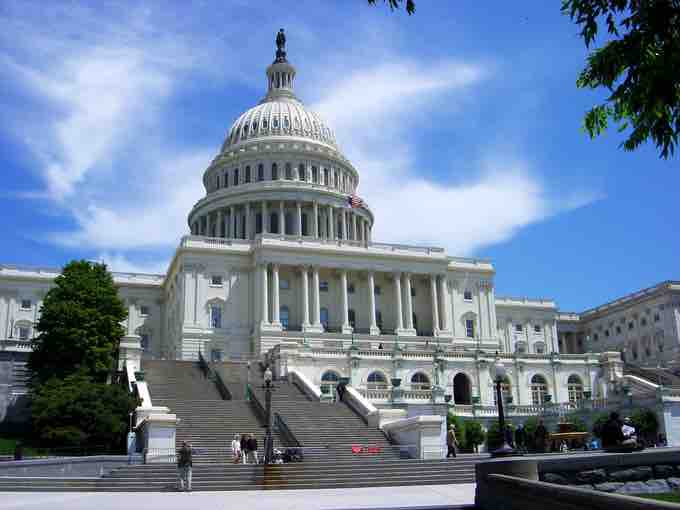The United States is a federal constitutional republic in which the President of the United States (the head of state and government), Congress, and judiciary share powers reserved to the national government, and the federal government shares sovereignty with the state governments. The executive branch is headed by the President and is independent of the legislature.
Legislative power is vested in the two chambers of Congress, the Senate and the House of Representatives. The judicial branch, composed of the Supreme Court and lower federal courts, exercises judicial power. The judiciary's function is to interpret the United States Constitution and federal laws and regulations. This includes resolving disputes between the executive and legislative branches. The federal government's organization is explained in the Constitution.
In the United States, suffrage is nearly universal for citizens 18 years of age and older. All states and the District of Columbia contribute to the electoral vote for president. Unlike the United Kingdom and other similar parliamentary systems that directly choose a particular political party, Americans vote for a specific candidate. Within the federal government, officials are elected at the federal (national), state and local levels. On a national level, the President is elected indirectly by the people through an Electoral College. People vote for electors who pledge, in turn, to cast their electoral votes for a particular candidate. In modern times, the electors virtually always vote with the popular vote of their state. All members of Congress and offices at the state and local levels are directly elected.
The modern political party system in the United States is a two-party system dominated by the Democratic Party and the Republican Party. These two parties have won every United States presidential election since 1852, and have controlled the United States Congress since at least 1856. Periodically, several other third parties achieve relatively minor representation at the national and state levels. Among the two major parties, the Democratic Party generally positions itself as left-of-center in American politics and supports a liberal platform, while the Republican Party generally positions itself as right-of-center and supports a conservative platform.
Special interest groups advocate the social, economic, and political causes of their specific constituencies. Business organizations will favor low corporate taxes and restrictions of the right to strike, whereas labor unions will support minimum wage legislation and protection for collective bargaining. Other private interest groups, such as churches and ethnic groups, are more concerned about broader policy issues that can impact their organizations or their beliefs. The amount of money spent by these special interests continues to grow, as campaigns become increasingly expensive. Many Americans have the feeling that these wealthy interests, whether corporations, unions, or specially organized campaign finance organizations called Political Action Committees (PACs), are so powerful that ordinary citizens can do little to counteract their influence.

The United State Capitol Building
The United States congress meets in the Capitol.